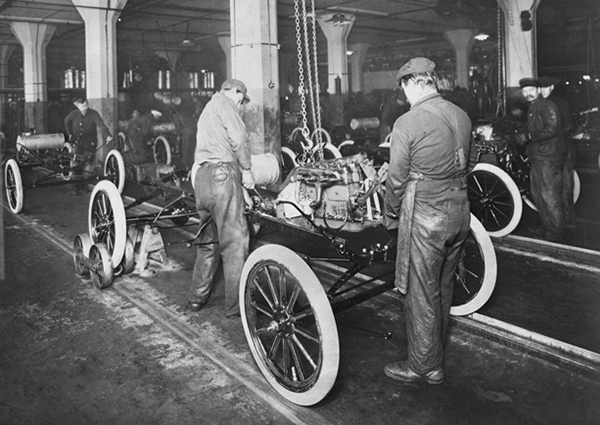

Markets and firms
Joseph Stiglitz (1943–)
Carl Shapiro (1955–)
1914 During a recession US car manufacturer Henry Ford announces that he is doubling the pay of his workers to $5 a day.
1920s British economist Alfred Marshall suggests the idea of efficiency wages.
1938 The Fair Labor Standards Act introduces a minimum wage in the US.
1984 Carl Shapiro and Joseph Stiglitz suggest that efficiency wages discourage shirking.
1986 US economists George Akerlof and Janet Yellen suggest social reasons for paying efficiency wages, such as boosting morale.
US economists Carl Shapiro and Joseph Stiglitz contend that firms pay what must be more than the market wage because there is always a core of unemployed workers. They explain this with the idea of “efficiency wages.” Employers choose to pay over the market wage because it is worth their while—they get more from their employees this way.
This situation arises because of market “imperfections.” Employers cannot observe their workers’ effort without cost (a problem that economists call “moral hazard”). Because of this, Shapiro and Stiglitz argue that efficiency wages cut “shirking.” If workers knew they would be right back in a job as soon as they got fired, they might be tempted to slack on the job. The higher wages and the knowledge that dismissal might lead to long-term unemployment increases the cost of losing a job and will make workers less likely to shirk.
Employers also cannot observe their workers’ ability without cost, and efficiency wages might help to attract better applicants. Other explanations include the employer’s desire to boost morale and minimize turnover (the higher the wage, the easier it is to hold on to workers and avoid costly retraining). High wages may also keep workers healthy enough to do a good job. This is particularly important in developing countries. Efficiency wages can further explain why firms don’t cut wages if demand falls: if they did, their best workers might quit.

Workers build the Model T motorcar on Henry Ford’s revolutionary assembly line in 1913. One of Ford’s insights was to realize that his own workers should also be his best customers.